Piano sheet music for beginners
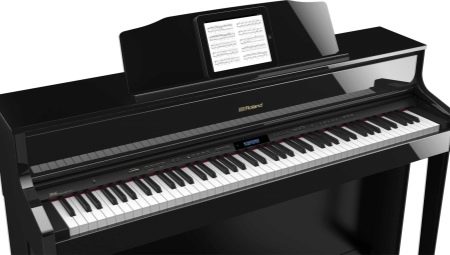
It is possible to play music without knowing the notes. However, this level is unlikely to go beyond the amateur. To be able to compose melodies, it is important to first learn the notes.
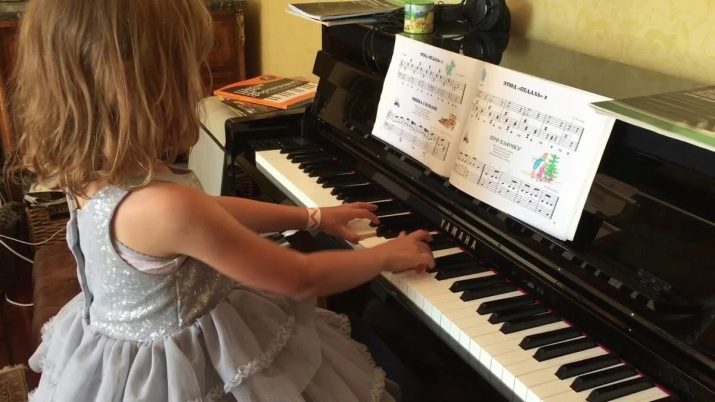
Location
The piano has 88 keys in total. Of these, 52 are white, 36 are black. With the help of the white keys, the sounds of open notes are produced. They are called open because they are unchanged. Black keys change the sound. Sharps and flats are played with their help.
Light colored music buttons are arranged in a row. Black buttons are located 2-3 buttons between white ones. This feature is associated with sound production.
The order of notes on the piano is as follows: Do-Re-Mi-Fa-Sol-La-Si-Do. These notes are included in the primary basic scale "C major". The initial "Do" note refers to the first octave, the final "Do" - to the second. The sequence of these sounds is repeated throughout the piano keyboard. "Do" is to the left of the group of two dark keys.
In addition to the location and name of the notes, what matters is which fingers you press the keys with. The fingers are numbered as follows: first - thumb, second - index, third - middle, fourth - ring, fifth - little finger. This is done for the convenience of the game and the aesthetic process. Beginners sign notes with numbers in order to quickly remember which finger to play. Learning by numbers helps to bring the process to automaticity.
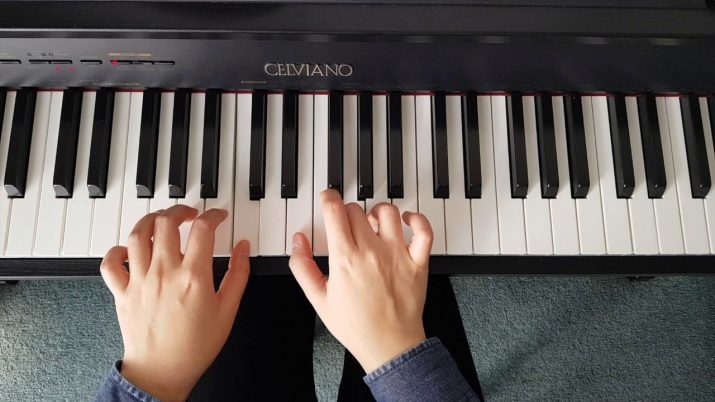
The components of the staff
Learning to read music begins with the staff of music. It consists of five horizontal lines parallel to each other. The staff is needed to record music. Each note has its own ruler.When there are not enough lines, additional stripes are drawn.
For example, "Before" is located on the first extension line. A short line is marked under the fifth strip, on which the note "Do" is drawn. "Re" is under the first line. "Mi" takes the first line. Fa is between the first and the second. "Salt" ranks second. "La" is drawn between the second and third lines. "C" is located on the third lane. The "C" of the second octave is between the third and fourth bands.
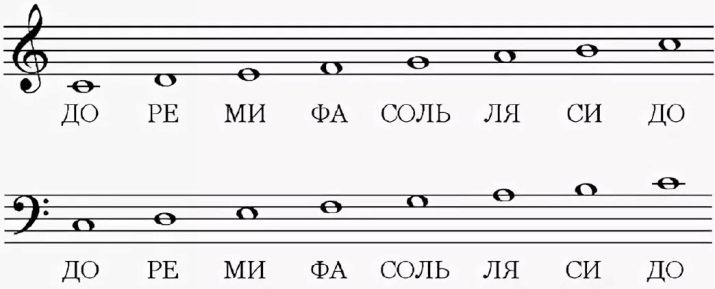
In addition to the basic notes, the staff contains the signs of alteration. These symbols are used to represent the black keys located on the instrument. They are found at the beginning of the scale after the treble clef. For example, harmonic major. This helps to understand in advance where to play the black keys, and where not. Also, the alteration is indicated next to the note. The decoding of the sharp and flat is as follows: the first symbol changes the sound, raising it by half a tone, the flat, on the contrary, lowers the sound as much.
Also in music such a symbol as bekar is used. It bears some resemblance to flat. Beginners can confuse it. The meaning of the bekar is exactly the opposite. The presence of a bekar indicates the cancellation of any changes in the whole measure or in relation to one note.
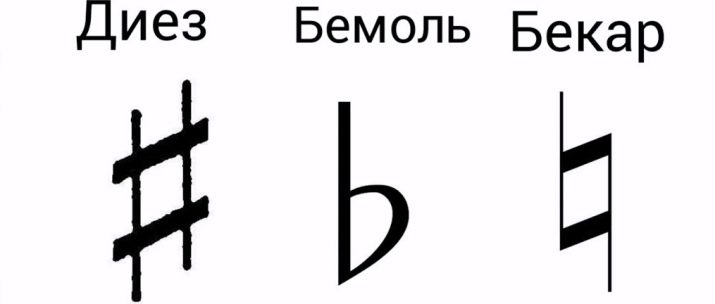
Keys
Treble clef and bass clef are important details of the staff. These characters are written in front of all other characters, taking the very first position. The treble clef refers to high-register sounds, and the bass clef refers to low-register sounds. In the piano system, the treble clef is most often used to denote the notes of the right hand, and the bass is most often used for the left.
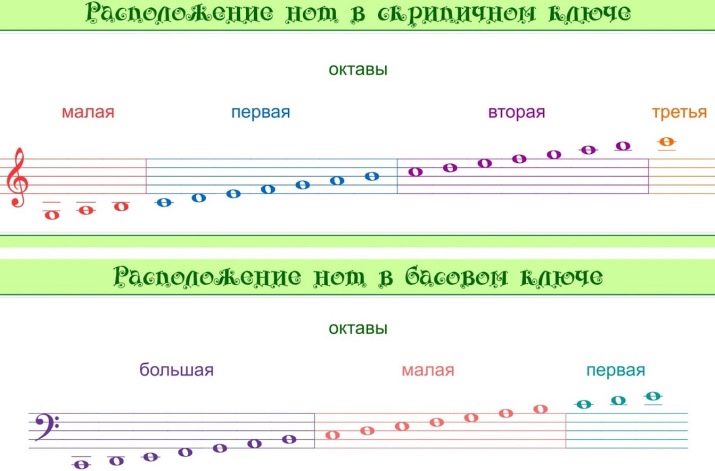
The size
So that the music does not sound chaotic and is ordered, they use different rhythms of the measures. The musical rhythm determines how many notes will fit in one fret. This gives the melody a frequency periodicity. The rhythm is indicated by two numbers, one above the other. Fraction is written in a similar way in mathematics. The difference is the absence of a division line.
Musical rhythms are as follows: 2/4, 3/4, 4/4, 3/8, 6/8. The rhythm is pronounced like this: two quarters, three quarters, four quarters, six eighths, two seconds. The number at the top indicates how many notes are in a fret, in other words, to how many you need to count: up to two, three, and so on. The number below shows how long the note will last. Notes can be whole, last the entire bar, half, half a bar. Quarter, eighth and sixteenth notes are also distinguished.
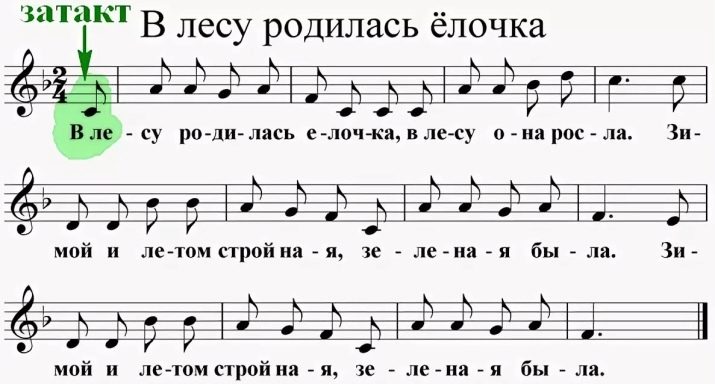
Two quarters is a common simple rhythm. He says that one measure consists of 2 quarter notes. The rhythmic pattern of the 2/4 size is different. In tune are 2 eights and 1 quarter or 6 sixteenths, combined by three. There are many variations. The main thing is that their duration corresponds to the 2/4 rhythm. At the beginning of the study, it is better not to split or combine notes. You can experiment when you have already learned the basics.
The most common 3/4 rhythm pattern is 3 quarter notes per fret. The option of using one half with a dot located on the side is possible. Then one note will sound for the whole measure. 3/8 is similar to 3/4. However, instead of quarters, the fret accommodates eighths.
In addition to simple ones, complex musical rhythms are used. These include 4/4 and 6/8. The 4/4 rhythm contains 4 beats, the duration of which is equal to the duration of 1 quarter... To designate the 4/4 rhythm, a sign similar to the letter "C" is often used.
Six-eighths is a 6-beat rhythm. It is obtained by combining two three-quarter notes and is represented by eighth notes.
Other complex sizes are similarly formed: 4/8, 6/4, 9/8, 12/8. The most important thing to remember is the relationship between the beat and the duration of the notes. Then there will be no problems with the score and with the rhythm of the game.
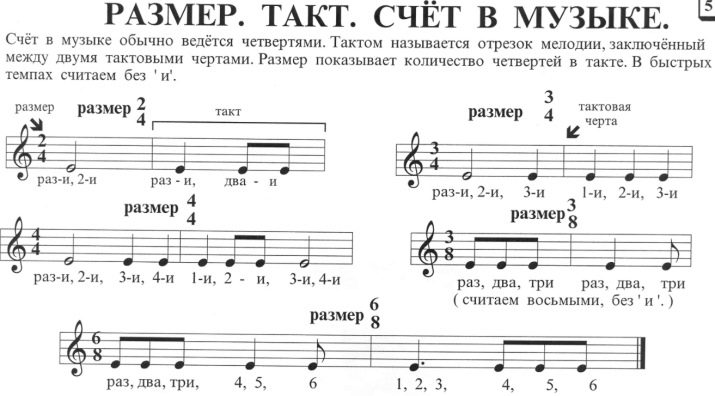
Bars and bar lines
A measure is a piece of music from one strong beat to another. The bar is a vertical bar that crosses the stave. This feature separates the two measures from each other. Since a melody can start with a weak beat, there is such a thing as "kick-off". This is the name of an incomplete measure. The melody, which began with the off-beat, ends with it.
The end of the song is indicated by a double bar. In this case, the second vertical line is thickened.
It is much easier to "hit" the beat or count out loud. Musical score is kept on "one and", "two and"; so up to four. "One and" - refers to one quarter note. The transition to "two and" indicates the transition to the next note.
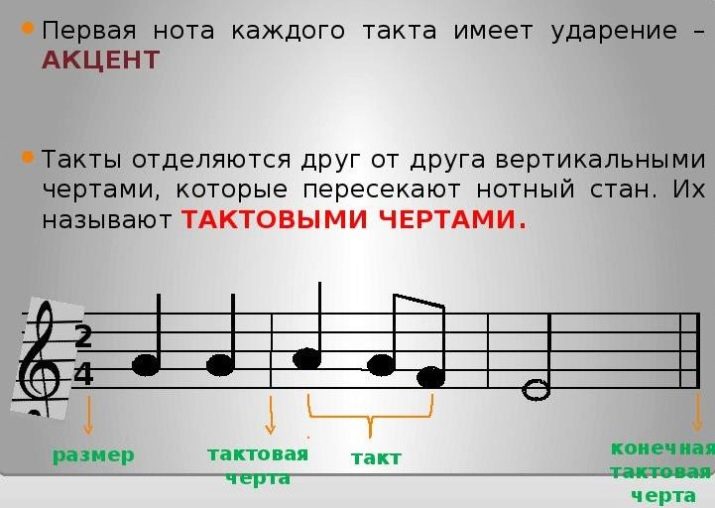
Alteration signs designation
Musical alteration refers to a change in the sound of notes. Alteration symbols are sharp, double sharp, flat, double flat and bacar.
Sharp outwardly resembles a grill on the buttons of a mobile phone. This is a sign of a semitone rise in the sound. The flat is similar to the English letter "b". This symbol lowers the sound by a semitone. Bekar undoes any sound changes. The symbol looks like the number "4" with a square at the top. A double sharp boosts the sound by two tones. It is spelled like a cross with sharp points that resemble a diamond. A double flat lowers the fret by two tones. The symbol is written as two letters "bb" located close to each other.
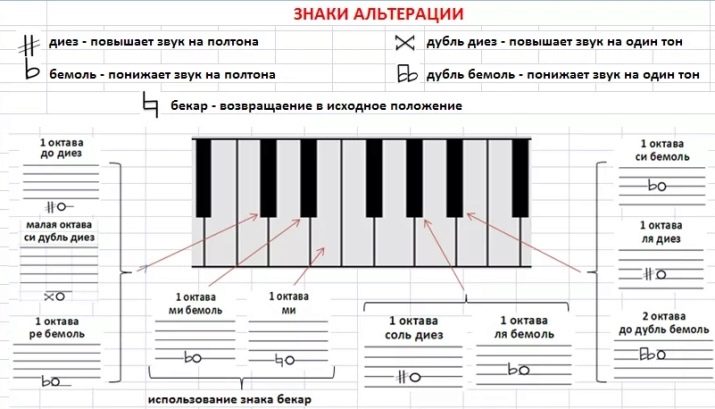
Key
In order to understand what the tonality is, it is worth highlighting such concepts as "scale", "scale" and "tonic". The scale is the notes arranged one after another. They are in either ascending or descending order. That is, the scale can begin either with the standard Do-Re-Mi-Fa-Sol-La-Si-Do, or look like this: Do-Si-La-Sol-Fa-Mi-Re-Do.
Fret is the connection between sounds, their consonance and orderliness. There are 7 degrees of scale, according to the number of basic notes. The steps are designated by Roman numerals.
Tonic is the first and main scale of the fret. There is a stable triad on it: Do-Mi-Sol. It gives color to the whole fret.
A tonality is a mode that has a certain tonic. The tonic is the note from which the harmony is built. It is worth considering with a simple example: the C major scale. Here the note "C" acts as a tonic, since the melody begins with it. Major colors the scale with a positive mood, which means it is a harmony. In the C minor scale, the C remains the tonic, with this scale the minor. Accordingly, the "mood" of the melody will change to a sad one.
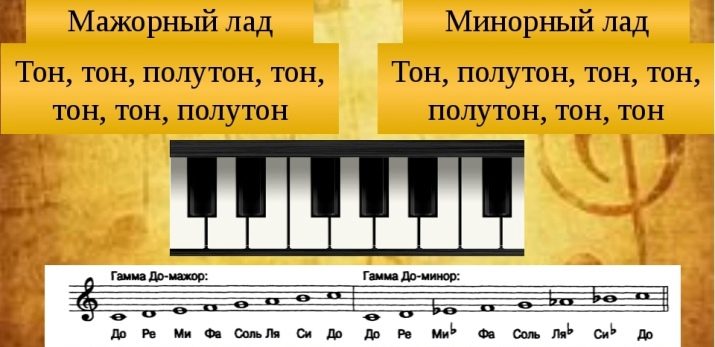
How easy is it to learn?
To learn the notes on your own, you just need to complete a series of easy exercises. The first thing to remember is the names of the notes. It is necessary to say them in forward and backward order. Knowledge must be brought to automatism. Also, theoretical knowledge must be correlated with practical. The presence of a tool at home is required. You need to play the C major scale several times. Playing the piano is also important to bring to automatism.
There are many beginner trainers that can help you quickly learn musical notation from scratch. An easy way to memorize the components of the staff is to compare them with the keys. Theory alone is not enough for playing the piano freely. It is important to combine the study of theory and practice. Theoretical concepts and terms will become much easier to understand by testing everything with a musical instrument.
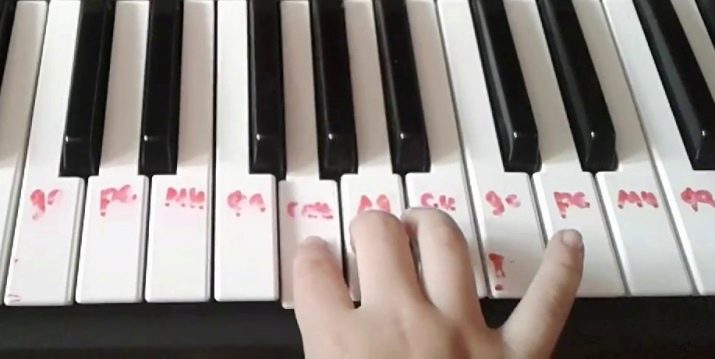
How to read sheet music?
For beginners, piano can seem daunting. Especially beginners are confused by sight-reading. At the first stages of teaching musical notation, signing of notes is allowed. However, it is better to go straight to reading musical signs without additional signatures. A few exercises will help with this.
It is necessary to record the basic notes on the stave. This will allow you to quickly remember which rulers are the musical signs, which will help in sight reading.
It is worth memorizing that the treble clef indicates the "G" of the first octave. The bass clef indicates a small octave "Fa".It is important to remember that the C note of the first octave is always located on the first extension ruler.
To control your knowledge, it is worth taking advantage of technology and installing the "music trainer" program. You can practice with unfamiliar sheet music. The program will help you determine if the notes are correctly selected.
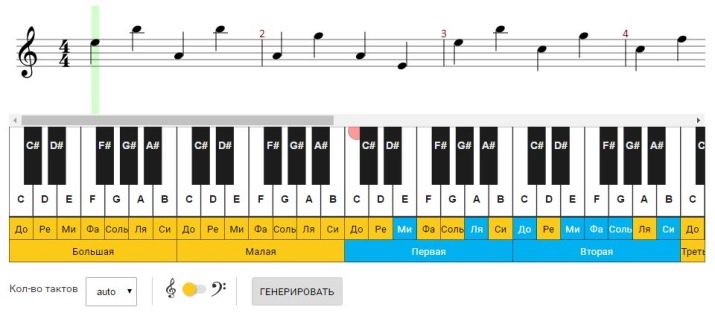
Examples of beautiful melodies
Before you start playing melodies from notes, it is important to highlight such a concept as "musical touch". The dash refers to the way in which the notes are played. Beginners perform the melodies with a non-legato stroke, that is, not coherently. In this case, the pause between sounds is no more than 1/4. There is also such a method of sound production as legato, or connected. Legato assumes a smooth playing, when one note "flows" into another. Another touch is staccato, abrupt. At the same time, the notes are played sharply, sharply, without merging into an integral melody.
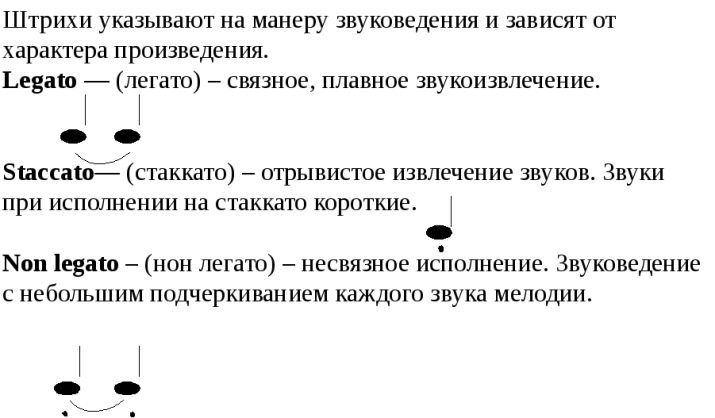
For beginners, it is best to pay attention to children's songs. You should not immediately choose complex works that take 2-3 sheets. There are many songs that are no more than 5-8 measures in length. For beginners, we can recommend B. Milic's music collection. It contains simple songs for children.
- "Festive". The melody consists of eight measures. The fixed size is 4/4. The music is recorded in quarter and whole notes. There are no sounds of alteration.
- "Winter". An eight-bar winter melody is perfect for training. The size is 4/4. A slow rhythm and a small number of notes will help you quickly master the piano.
- "Flags". This melody is a little more complicated. It is played with alteration signs in the keys of C sharp major and F sharp major. A dotted note also appears here. A dot below or above a note indicates that it should be performed with a staccato stroke.
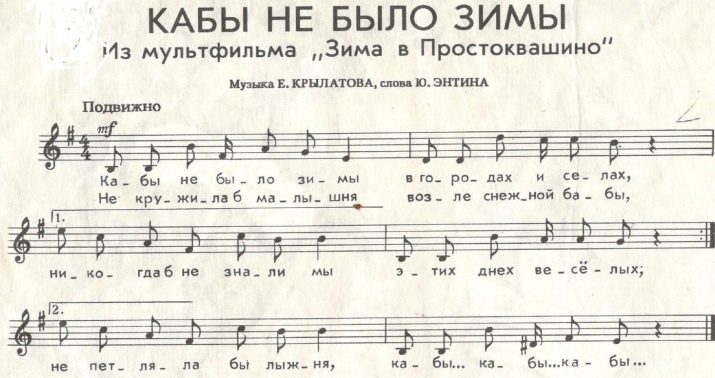
Having practiced on simple songs, you can move on to more complex ones. Such melodies can consist of 15-20 measures.
- "In the grass Grasshopper sat". A popular melody that has signs of alteration, notes with dots. The song will help to consolidate and improve the skills acquired earlier.
- "Quail". This sad melody will introduce you to the A minor scale. It is played at a 2/4 rate. There are several versions of this song. In one there are no signs of alteration, in the other they are present. This allows you to choose between simple and sophisticated versions.
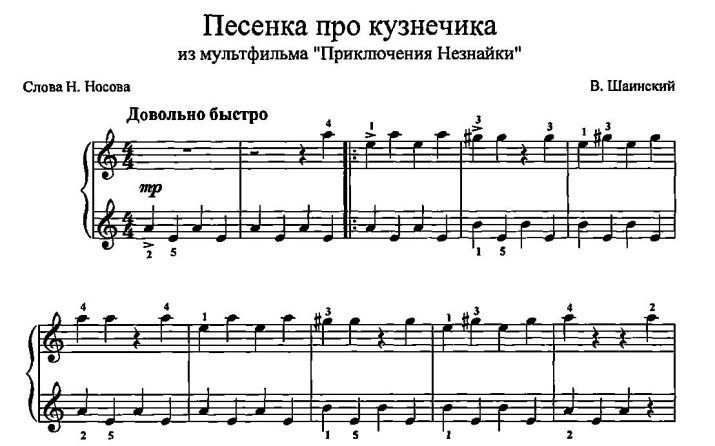
To keep the children engaged in activities, you can offer to play modern songs from cartoons.
- Melody from "Fixies". The melody seems unpretentious, but this is only at first glance. The stave is represented by treble and bass clefs, there are flat, sharp and bacar. To play this song, you need to "get acquainted" with the sixteenths and chords.
- "My little pony". The melody "Friendship is Magic" is represented only by the treble clef. It is played in the keys of C sharp major and F sharp major. There are no other signs of alteration.
In addition to sight reading and memorizing notes, it is important to take the time to extract sounds by ear. You can listen to any melody and try to pick it up on a musical instrument. This will help develop creative skills.
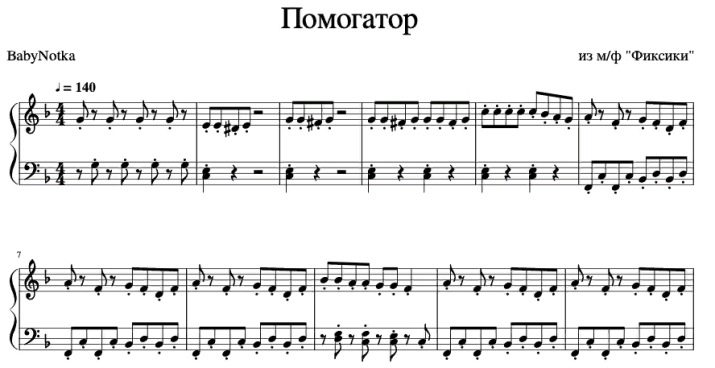
It will take more than one year to master the piano perfectly. However, you can start literally from scratch. The required theory is learned in the learning process. The rest depends on desire and perseverance.








